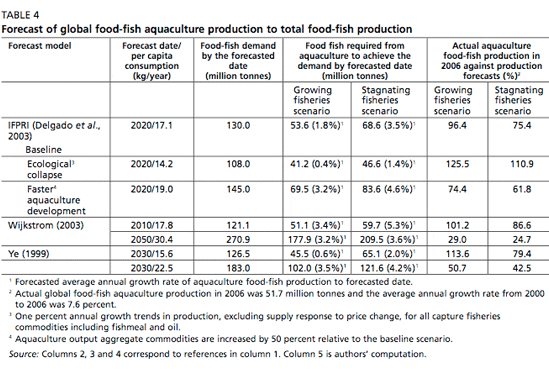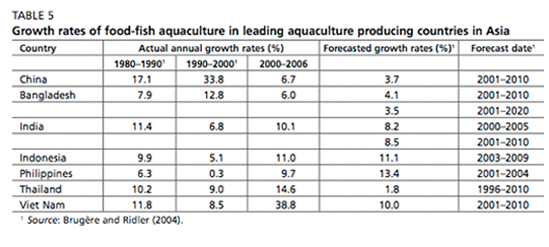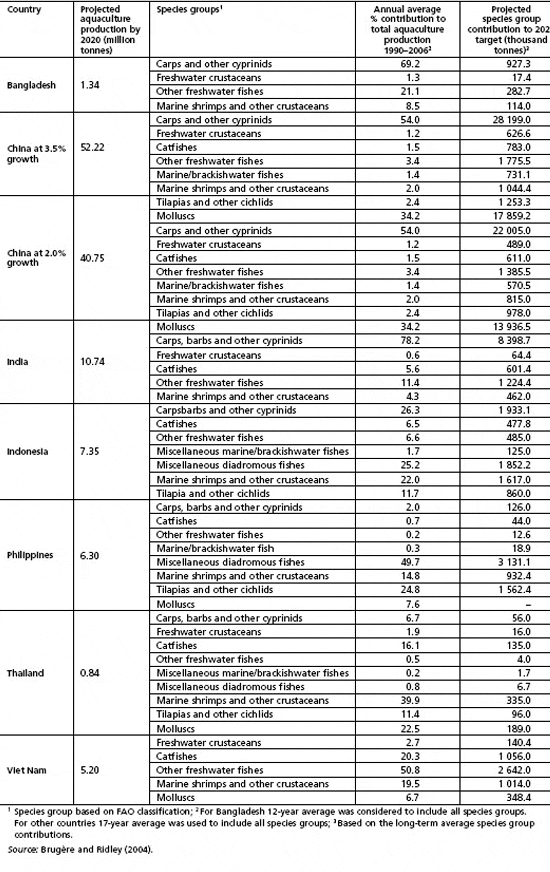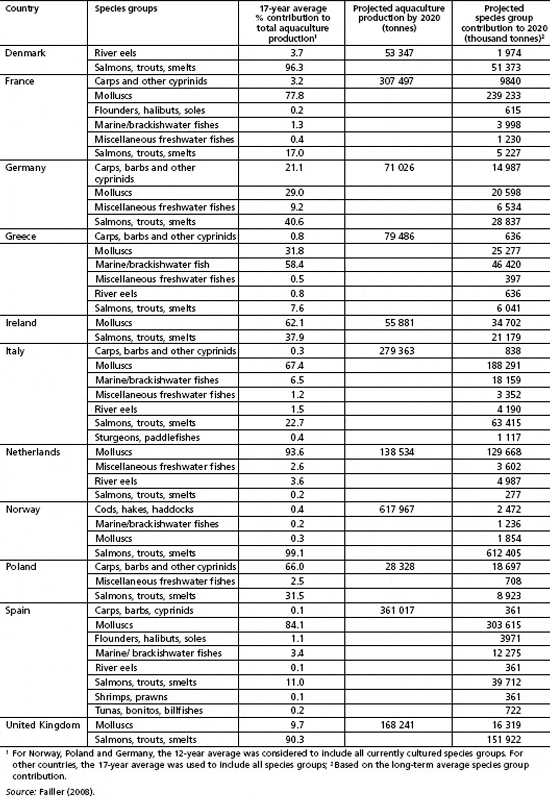Projected Global Aquaculture Production with Contributions from Asia and Europe and the Implications for Aquafeeds
With stagnating global capture fisheries production, there is growing expectation for aquaculture to meet the shortfall of aquatic products and to cater to the growing demand of the increasing population. Predictions of the exact shortfall are imprecise: many forecasts have been developed based on a wide range of assumptions (Ye, 1999; Delgado et al., 2003; Wijkstrom, 2003; Dey, Rodriguez and Briones, 2004; Brugère and Ridler, 2004).
Delgado et al. (2003) with their International Model for Policy Analysis of Agricultural Commodities and Trade (IMPACT model) attempted to address the complexity inherent in creating a demand forecast by incorporating prices and their effects on consumer demand into the IMPACT model. Predictions were made using three main scenarios. Under the baseline scenario, which is the most plausible, “best guess” assumptions, global food-fish production was projected to reach 130 million tonnes by 2020 and aquaculture was expected to produce 41 percent (53.6 million tonnes) of this production. However, projected production at 2020 for all models (assuming a capture fisheries growth of 0.9 percent per year) has already been achieved (Table 4).
In their study for FAO, Brugère and Ridler (2004) adapted the studies of Delgado et al. (2003) for national predictions by considering government policy and production targets in national plans. Such national predictions were made for China, India, Indonesia, Thailand, Bangladesh, Chile, Viet Nam, the Philippines, Egypt, Brazil and Canada (Table 5).
The global actual average annual growth rate of 7.6 percent (from 2000 to 2006) (see footnote 2 in Table 4) and actual average annual growth rates of leading aquaculture producing countries in Asia (Table 5) suggest that all forecasted targets set for 2010 and 2020 by the forecast models in Table 4 are likely to be met.


These targets together with historic trends in species contribution to annual production can be used to forecast estimates of production tonnage and to predict trends in intensification of aquaculture practices for the various species groups farmed. These scenarios can help to understand the future demand and pressure on quantity and types of feed ingredients that may be required to meet production targets. For this purpose, the food-fish aquaculture production outlook projected to 2020 by Brugère and Ridley (2004) based on country national plans was used.
Contribution by species group to the forecasted aquaculture production (excluding aquatic plants) in 2020 is given in Table 6. To estimate the contribution of species groups to forecasted aquaculture production (excluding aquatic plants) to 2020 in countries listed in Table 6, the 17-year (1990–2006) average annual percentage contributions of the species groups (for Bangladesh, the 12-year average) were applied to 2020 production predictions.
Similarly, the contributions by species group were estimated for Europe based on the projected aquaculture production (excluding aquatic plants) forecasted by Failler (2008) in the 11 leading aquaculture producing countries in Europe (Table 7), which accounted for 88.0 percent of the total European aquaculture production (excluding aquatic plants) in 2006. Projected contributions by species group to aquaculture production (excluding aquatic plants) by 2020 in selected leading aquaculture countries in Asia

Projected contributions by species group to aquaculture production by 2020 in selected leading aquaculture countries in Europe


